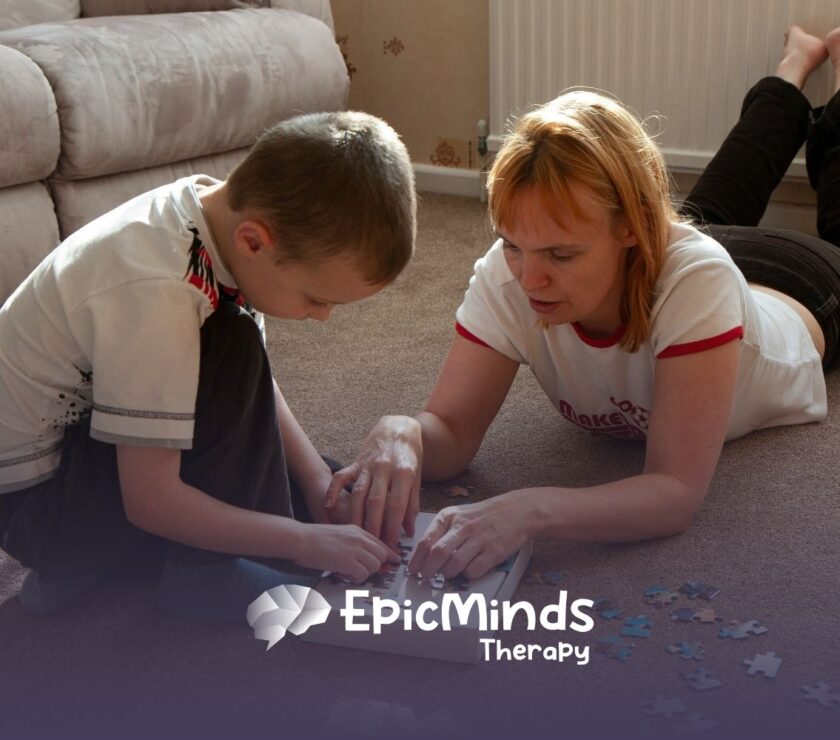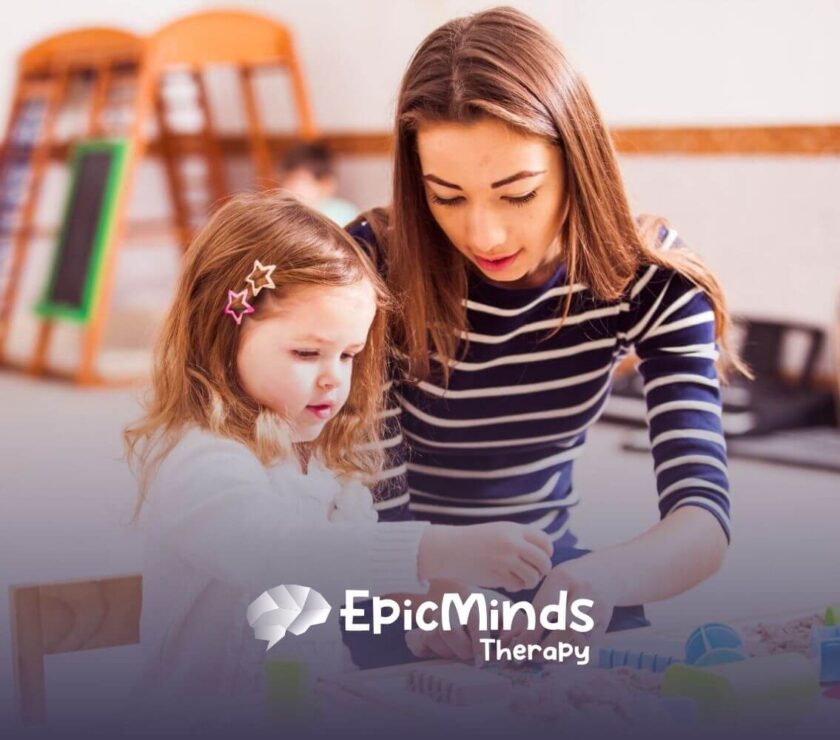Key Highlights
- ABA therapy supports skill development through positive behavior techniques.
- It’s often used to help children on the autism spectrum.
- Programs are tailored to each child’s needs and developmental stage.
- Goals often focus on communication, social behavior, and daily living.
- Understanding where your child is on the spectrum can guide treatment.
- Proven methods like Discrete Trial Training and the Early Start Denver Model are commonly used.
Making decisions about your child’s care isn’t easy—especially when faced with terms like “ABA therapy” that may sound unfamiliar or even clinical. But behind the label is a simple idea: helping kids grow using structure, support, and encouragement tailored to their needs.
I remember working with a mom who was hesitant about ABA therapy. Her 3-year-old son had just been diagnosed with autism, and she was overwhelmed.
After a few months of gentle, play-based sessions in in-home ABA therapy, she shared that he had begun using words to ask for what he needed. She said, “I finally feel like I can connect with him again.”
That’s when I knew she had made the right call—for her and for him.
Considering Your Child’s Unique Needs and Diagnosis
Why Personalization Matters
Every child is different. Their needs, strengths, and challenges are unique—even within the autism spectrum. One of the first things to think about is whether ABA therapy matches your child’s specific developmental goals.
Some children may need help with communication, while others might need support with emotional regulation or everyday routines. A strong understanding of your child’s current behaviors and challenges will help you and your care team set meaningful goals.
Partnering with Professionals
Before jumping in, it’s a good idea to consult with developmental specialists, psychologists, or pediatricians. They can help assess whether ABA is a good fit and guide you toward a personalized treatment plan.
Assessing Where Your Child Is on the Autism Spectrum
Understanding the Spectrum
Autism affects each child differently. Some may show only mild challenges with communication or social interaction, while others need more structured support.
Knowing where your child falls on the spectrum helps you and your team choose the right tools and techniques.
Developmental Needs by Age
Young children might need help with foundational skills like making eye contact or responding to their name. Older children may need support with independence, friendships, or handling transitions.
ABA therapy can be adapted based on age and developmental stage.
Getting an Accurate Assessment
A licensed specialist can run tests to pinpoint your child’s developmental level. These assessments help shape treatment plans and highlight areas where your child may thrive or need extra help.
Identifying Goals and Outcomes That Matter
What Progress Looks Like
Before starting therapy, think about what you want your child to achieve. Goals might include speaking in full sentences, playing with peers, using the bathroom independently, or reducing meltdowns.
Short-Term and Long-Term Planning
Good therapy plans include both immediate goals and bigger, long-term milestones. For example, a short-term goal might be learning to ask for help, while a long-term goal might be participating in a classroom activity without assistance.
Weighing the Benefits and Drawbacks of ABA Therapy
Potential Benefits
Many families see meaningful progress with ABA. Therapists focus on reinforcing helpful behaviors and teaching skills in small, manageable steps. Kids often show better communication, more independence, and improved emotional regulation over time.
Things to Watch Out For
Not every ABA program is a perfect fit. Some families feel that traditional ABA can be too rigid or fail to honor a child’s personality. It’s important that any program you choose is respectful, adaptive, and responsive to your child’s individual needs.
Open communication with your provider is key. Make sure your input is valued and that therapy aligns with your family values and your child’s comfort level.
Looking at the Research: What Evidence Says About ABA
Backed by Decades of Research
ABA therapy is supported by a large body of scientific research. It’s been endorsed by organizations like the U.S. Surgeon General and the American Academy of Pediatrics as an effective treatment for autism.
Proven Methods You Might Hear About
| Technique | Focus |
| Discrete Trial Training | Breaks tasks into small steps to teach specific skills |
| Early Start Denver Model | Play-based approach for toddlers and preschoolers |
| Verbal Behavior Interventions | Helps improve language and communication |
These methods are often used together and adapted over time as your child grows and learns.
Understanding the Controversies Around ABA
Past vs. Present
Some critics, especially in the neurodiversity community, have raised concerns about older ABA methods. In the past, ABA could be highly structured and focused mainly on reducing behaviors—sometimes at the cost of the child’s individuality.
Today, many ABA providers use more flexible, child-centered approaches that prioritize positive reinforcement and collaboration with families. That’s why it’s important to ask about the provider’s approach and values before starting ABA therapy.
Keeping the Focus on Your Child
Modern ABA should support—not suppress—your child’s uniqueness. Look for programs that respect your child’s preferences and strengths, and include your family in shaping the treatment plan.
Practical Considerations Before You Start
How to Know If It’s Feasible
ABA therapy can be a big commitment. Sessions often happen several times a week, and they can be costly depending on your insurance.
Involving the Whole Family
Family participation is essential. When caregivers reinforce skills at home, therapy is much more effective. That’s why many programs now offer parent training or include caregivers in goal-setting.
Finding Qualified ABA Providers
What to Look For
Choose a provider with certified professionals—ideally a Board Certified Behavior Analyst (BCBA). Make sure they’re experienced with children who have similar needs to your child’s.
Ask how they build individualized plans, how they track progress, and how they involve parents. You should also ask whether they offer in-home, clinic-based, or virtual options.
Where to Start
You can search online directories or ask your pediatrician for recommendations. Schools and early intervention programs can also help connect you with local providers.
Cost, Insurance, and Accessibility
Understanding the Financial Side
ABA therapy can cost anywhere from $120 to $200 per hour. However, many insurance plans—both private and public—now offer coverage.
Here are some options that may help:
- Medicaid: Covers ABA for eligible children under 21.
- School Services: Some schools provide ABA-based services after evaluations.
- Scholarships/Grants: Some nonprofits offer financial assistance.
- Telehealth: Virtual sessions can reduce travel time and costs.
Always check with your insurance provider to understand what’s covered and what documentation is required.
Conclusion
ABA therapy has helped many children grow their communication, social, and self-help skills—but it’s not a one-size-fits-all solution. What works for one child may not work for another.
The key is understanding your child’s needs, setting clear goals, and choosing a provider who will work with you to support your family values. Take time to research your options, ask questions, and trust your instincts as a parent.
At Epic Minds Therapy, we know no two children are alike. That’s why we build therapy plans that grow with your child and fit your family’s goals. Whether you’re just starting out or looking to make a change, we’re here to help.
Reach out to Epic Minds Therapy—and let’s take the next step together.
Frequently Asked Questions
How do I know if ABA therapy is right for my child?
Start by looking at your child’s communication, social, and behavioral needs. A qualified ABA provider can assess your child and recommend a plan tailored to their development and diagnosis.
At what age is ABA most effective?
ABA is most impactful when started early, especially before age five. Early intervention supports brain development and lays a foundation for future learning and independence.
Can ABA therapy be done at home?
Yes. Some families choose in-home ABA to integrate learning into daily routines. Others prefer clinic settings for structured environments. Your provider can help decide what’s best.
What should I look for in a good ABA provider?
Look for certified professionals (like BCBAs), clear treatment goals, consistent progress tracking, and open communication with families. The provider should tailor the program to your child—not offer a one-size-fits-all plan.
Are there alternatives to ABA?
Yes. Depending on your child’s needs, you might explore speech therapy, occupational therapy, developmental preschool programs, or social skills groups. Some families also combine ABA with other supports.
Sources:
- https://www.bacb.com/bcba/
- https://www.autismspeaks.org/applied-behavior-analysis
- https://pmc.ncbi.nlm.nih.gov/articles/PMC6269398/
- https://www.healthline.com/health/aba-therapy
- https://medicine.iu.edu/blogs/pediatrics/child-development-choosing-between-aba-therapy-and-school




